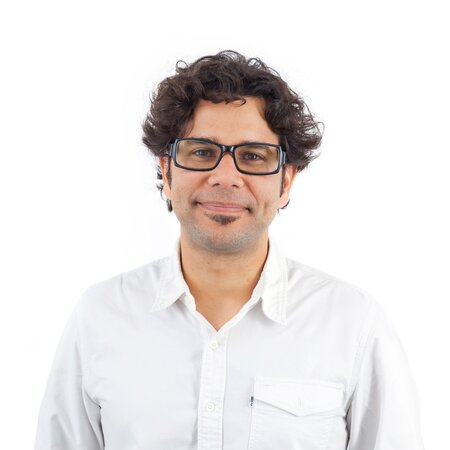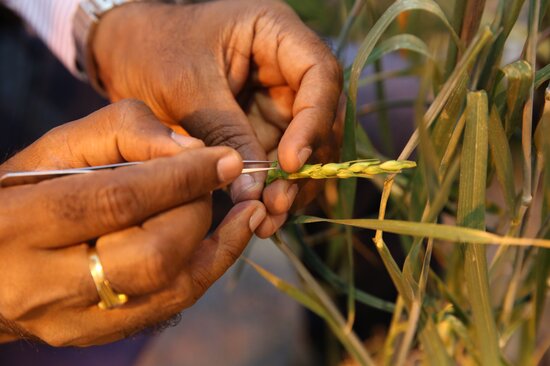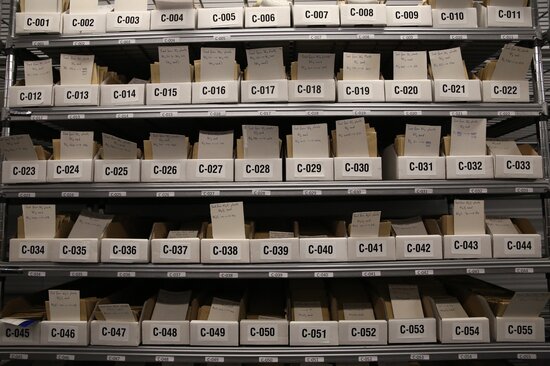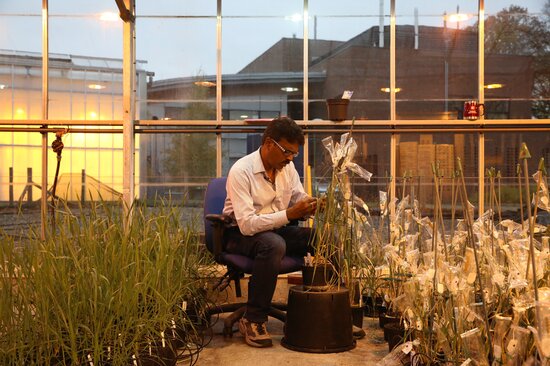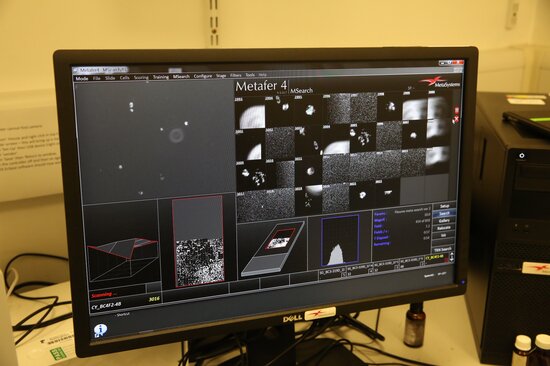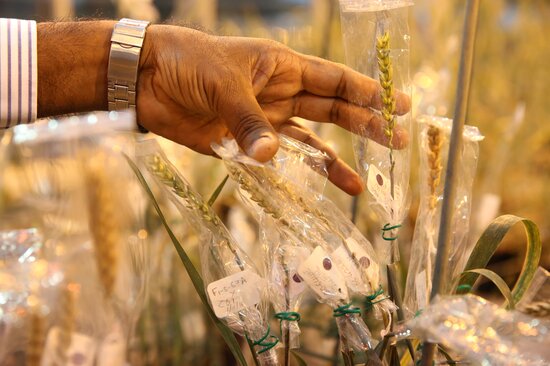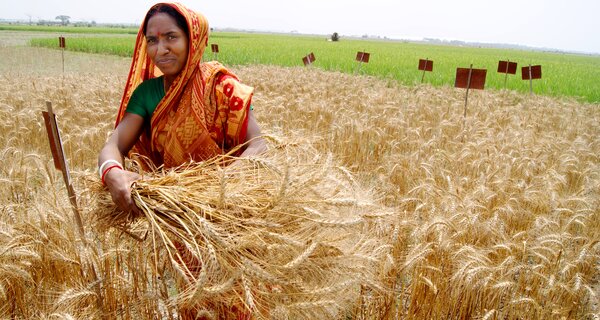Durum Wheat Pre-Breeding for Food Security
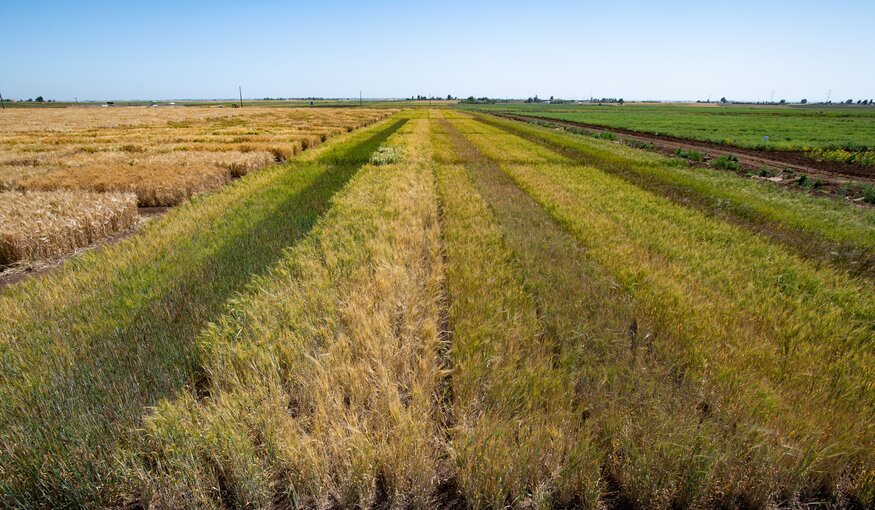
2 March 2018
Durum wheat is the tenth most important food crop in the world. It is often referred to as the “Biblical crop”. Its ancient domestication was linked to the surge of modern society and it was probably one of the first goods to be traded along the Mediterranean shores by Phoenicians.
Yet yields have reached a plateau in recent years. As the world’s population grows, the production of durum wheat will need to increase. And as the climate changes, durum wheat will need to become more resilient. That’s a tall order for a crop with limited genetic variability.
A project initiated in 2014 seeks to re-establish the genetic variability of durum wheat by introducing beneficial traits obtained from wheat’s wild cousins. Crop wild relatives (CWR) are known as a valuable source of genetic variability that can provide a wide range of beneficial genes possessing different traits of agronomic importance. The durum wheat pre-breeding project is one of numerous activities in the 10-year Crop Wild Relatives project, which is supported by the Government of Norway.
The project benefits from earlier work done in introducing traits from crop wild relatives into bread wheat during the Designing Future Wheat (DFW), Wheat Improvement Strategic Programme (WISP) and the LoLa Pre-breeding Programme projects, which were funded by the BBSRC.
Ian and Julie King, Director and Research Director of the Nottingham/BBSRC Wheat Research Centre at The University of Nottingham in the United Kingdom are leading a team that is successfully transferring genetic variation from wild relatives into bread wheat. The experience they have gained in their bread wheat project made them ideally suited to lead the durum wheat pre-breeding project. The team has now embarked on a project to develop durum varieties with enhanced genetic variability and adaptability to a wide range of stresses.
The Crop Trust’s Luis Salazar visited the Nottingham/BBSRC Wheat Research Centre glasshouses at The University of Nottingham and spoke with Professor King and Dr King about the progress they’ve made to date on the project.
Luis Salazar: Durum wheat seems to attract much less attention than bread wheat. How important is durum wheat worldwide?
Ian King (IK): Durum is a significantly important crop in the Southern Europe, North Africa, Middle East, India and the United States. Traditionally it is seen as simply a “pasta” wheat but it is also used to make couscous, bulgur, flat breads and many types of sweets. In some countries, people consume a meal made of durum wheat seven or more times a week. It is also very important from a commercial standpoint for the countries, such as those in North Africa (i.e. Morocco), that grow it. Durum wheat is grown mostly for pasta and sells at a much higher premium price than bread wheat. In that sense, many smallholder farmers see durum wheat as a cash crop that could help them out of poverty. So it’s critical that we ensure farmers have access to varieties that allow them to produce the highest quality durum they can.
Julie King (JK): Though there is far less durum wheat produced than bread wheat, it is still the tenth most important crop in the world. In many developing countries such as North Africa, Ethiopia, Syria, Iran, Afghanistan and India it is a key crop or even a staple crop in some remote areas. Also, it is well differentiated from bread wheat and needs full attention in the light of feeding an ever-increasing global population. But despite its importance, fewer resources are allocated to durum crop improvement.
LS: Why is it so critical to work with durum wheat?
IK: The story of breeding durum wheat is similar to that of bread wheat. There is relatively little genetic diversity in the cultivated varieties available. But over time breeders have done a fantastic job of making use of this diversity to produce high-yielding crops. With climate change, the yields are starting to plateau and we’re not getting the same kind of yield increases we used to.
LS: OK, so there is limited genetic diversity in durum wheat. Tell me why use crop wild relatives?
IK: The big why! Unlike domesticated wheat that has undergone the human process of selection under the “pampered” agriculture conditions, the distant relatives have had to face nature’s wrath without the human help. Hence, they represent a treasure trove of wild genes for adaptation to severe droughts, heat, diseases or the other challenges that climate change will throw our way. What we want to do is put the beneficial genetic variation from wild relatives into the domesticated lines, to toughen up these high-yielding modern varieties and give a chance to our breeders to continue their progress.
LS: The project is dependent on the availability of crop wild relatives. Where did you originally source the CWR when you crossed with bread wheat?
JK: All of the wild relative seed that we are using came from various genebank collections, mainly the Germplasm Resource Unit of the John Innes Centre (JIC) in the United Kingdom or from the United States Department of Agriculture (USDA). Most of the seeds mainly originate from the Fertile Crescent area of Syria/Iraq/Iran region or from the Caucasus like Georgia and Azerbaijan.
LS: You obtained the original material from genebanks and ultimately your work will go to breeders. With these crop wild relatives you are the link between the genebanks and breeders. You’re in the middle, the “pre-breeders.”
IK: Yes. So what you have to do is introduce the genetic variation from the wild relatives into domesticated wheat. That’s where we come in. In very simple terms, we cross wheat with a wild relative and keep crossing it back with the wheat parent generation after generation. After several crosses we may have a line of wheat that has just a small genome fragment from the wild relative. Eventually, thanks to the traits introduced from the CWR, a new, cultivated variety may now have a valuable trait such as disease resistance or heat tolerance or salt tolerance.
LS: I understand that not too many people do this. In fact, you’re considered a ‘rare breed’. Why are not many people doing it and why is it so important?
JK: Pre-breeding used to be a part of the wheat improvement process worldwide. However, since the 1980s, less attention has been given to pre-breeding research. The common belief was that breeders had been successful in increasing wheat yields that can satisfy the world’s needs. That belief has changed now.
IK: In previous years, there were a lot of people who worked in our field. Now there are very few.
JK: So a part of the funds of this CWR project went towards funding the training of a new researcher in wheat/wild relative introgression. We worked closely with our post doctoral student, Srinivasachary from India, who not only played a key role in the work but now has learned the tricks of the trade.
LS: You’re using pre-breeding to introduce traits from wild crop relatives into durum wheat. When you do this, are you searching for specific traits?
JK: The quick answer is no. We did start out by selecting wild relatives because they were known to have certain traits, but the aim is to get materials screened as extensively as we possibly can. Effectively we are using a “shotgun approach.” In the past, whenever a segment has been transferred for one particular reason, it’s always proved useful for other reasons as well. The breeders said to us “the more segments you put in will allow us to screen the material for more traits.” Within the context of this CWR project however, the first evaluations will relate to drought tolerance in Morocco and India.
IK: In the past breeders bred for a specific trait and then threw everything else out. The “shotgun approach” we are using is a sign of the times. We’re interested in everything! We’re interested in transferring every bit of variation the crop wild relatives might have into wheat. What’s hindered the work in the past is that we didn’t have the tools and technology to identify when we had transferred genetic variation from a wild relative into wheat.
LS: You spoke of these new tools to identify variations. I understand you are using cytogenetics techniques. Are those the new tools you speak of?
JK: No, this type of cytogenetics work in wheat has been carried out for many years. The person who really started it was Ernie Sears back in 1959 and 1960 when he transferred a segment of a wild Aegilops species into bread wheat. It conferred rust resistance and had a major impact on the production of bread wheat in the United States. However, cytogenetic work is very long and tedious, with many hours spent looking at slides under a microscope for each attempt, many of which fail. This is why until now we have only a few great success stories using cytogenetics like the case of Sears.
Here’s the limitation of the breeding process: Breeders screen the wild relatives for the trait of interest, such as disease resistance. They then make their cross, raise the progeny and screen those for the disease resistance. They only take forward the progeny that show that particular trait. Everything else is thrown away. Then they do another cross and screen the progeny again. The problem is they don’t know what they’ve thrown away, because it has not been possible to identify the segment or track it by means other than using the phenotype.
But with the DNA fingerprinting revolution, we have been able to finally revamp the idea of cytogenetics, get rid of some of the most time-consuming steps, and bring the methodology to a whole new scale.
LS: Are you now able to identify those segments?
IK: Yes. We can now use molecular marker techniques and not just the phenotyping, to be able to identify if we have introgressions and then track them through the backcross generations. We collaborated with the University of Bristol to screen single nucleotide polymorphisms (SNPs), which are variations in the DNA. These have given us the high-throughput and high-resolution as far as the detection and tracking of our introgressions is concerned. We have been able to validate this detection and tracking using genomic in situ hybridization, or GISH, which highlights the chromosomes.
LS: What happens next? Is the material then evaluated?
IK: Yes. We have partnered with the International Center for Agricultural Research in the Drylands (ICARDA), the International Maize and Wheat Improvement Center (CIMMYT) and the Indian Institute of Wheat and Barley Research (IIWBR), who all have breeding programs for durum. These three partners will carry out field evaluations of the lines developed in the durum project and evaluate primarily for drought tolerance but also for disease resistance, yield potential and heat tolerance.
LS: The Crop Wild Relatives project for durum wheat improvement continues through to December of 2019. You have already accomplished a lot in the three years of the project and will no doubt be busy in the final two years. What does it take from a personal perspective to conduct this kind of pre-breeding work?
JK: I think you must have an interest in the long-term goals of the project. You are not going to get anything back in the first 10 years. You’re looking further down the line to when the pre-breeding material translates into proper breeder’s material. You need patience … and I also think it helps if you’re mad!
LS: What has been the most gratifying aspect of this project?
JK: What has driven not just me, but the group, is the fact that at the end of the day, we can make a difference. Maybe not immediately, but perhaps in 10 to 20 years, we could produce wheat varieties that could help lead to food security. And that would make it all worth it. A good example is the Olam Prize that my project collaborators at ICARDA have recently won. They started in 2004 to introduce wild emmer wheat and Aegilops into their breeding crosses, and 14 years of hard field work later they were recompensed with new heat-tolerant and early-maturing varieties that might help lift millions of farmers along the Senegal River from poverty.
LS: Is there enough durum wheat diversity that has been conserved for use, now and in the future?
JK: There are two sides to it. The more that can be collected and conserved, the greater the chance of getting that trait that you really want. Or a trait that you might not even know you’re looking for today, but might need in the future. We have a number of genebank accessions of each species, as the different accessions don’t all show the same traits. For example, one seed sample out of 1000 might show a particular disease resistance phenotype.
I also feel that when we put seeds into a genebank we need to consider how they will be used. We’ve been lucky with the bread wheat projects and this project, as we’ve been provided with the money to train the next generation. But we are rather like dinosaurs and are dying out quickly.
IK: Yes, the world must conserve crop diversity, but the world also needs people in the future who will be able to make use of those seeds and who can apply the latest techniques to develop new climate-proof varieties. Without that knowledge, a lot of what is in genebanks will be difficult to use in the future.
This article was originally published on the Crop Wild Relatives (CWR) Project website.
The CWR Project, which ran from 2011 to the end of 2021, was managed by the Crop Trust with the Royal Botanic Gardens, Kew, and implemented in partnership with national and international genebanks and plant breeding programs around the world. This global team of experts collected important species of crop wild relatives, ensured their long-term conservation, and facilitated their use in breeding new, improved crops. The CWR Project was generously supported by the Government of Norway. Launched in 2021, Biodiversity for Opportunities, Livelihoods and Development (BOLD) builds on the work and achievements of the decade-long CWR Project.
Categories: Crop Wild Relatives, Wheat


